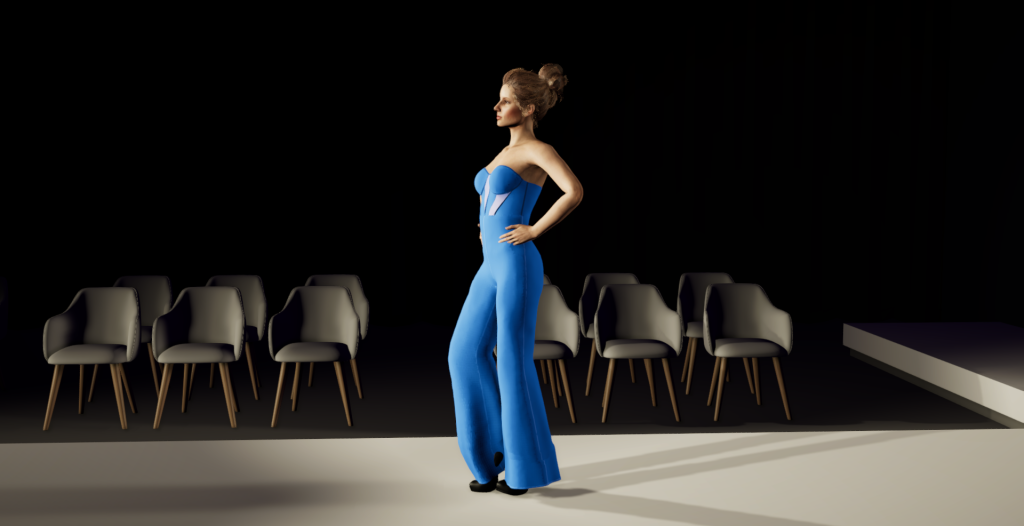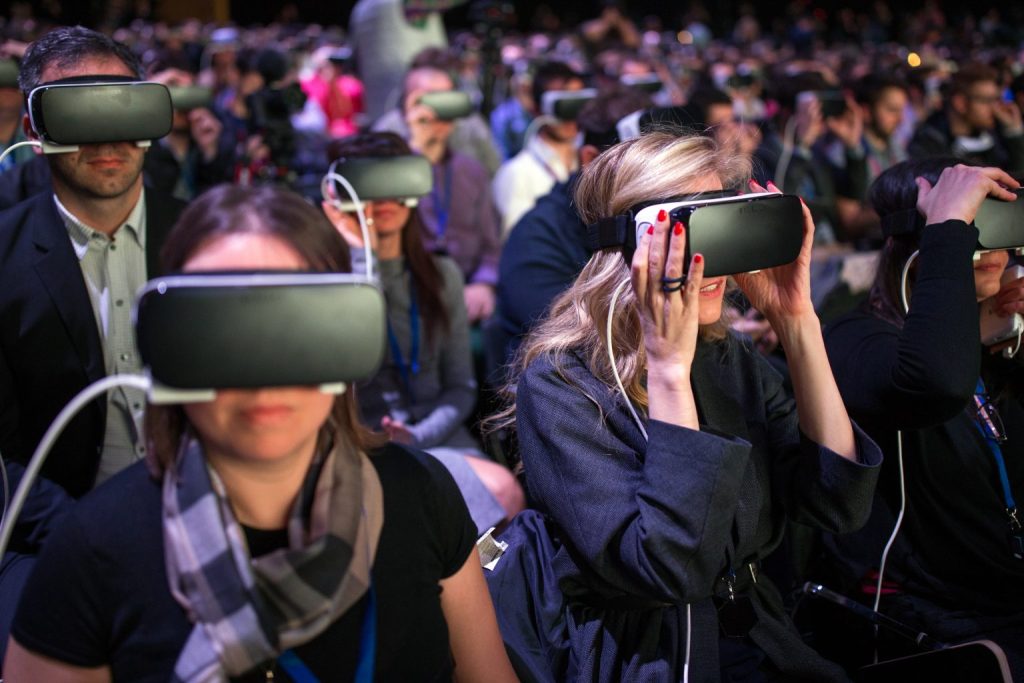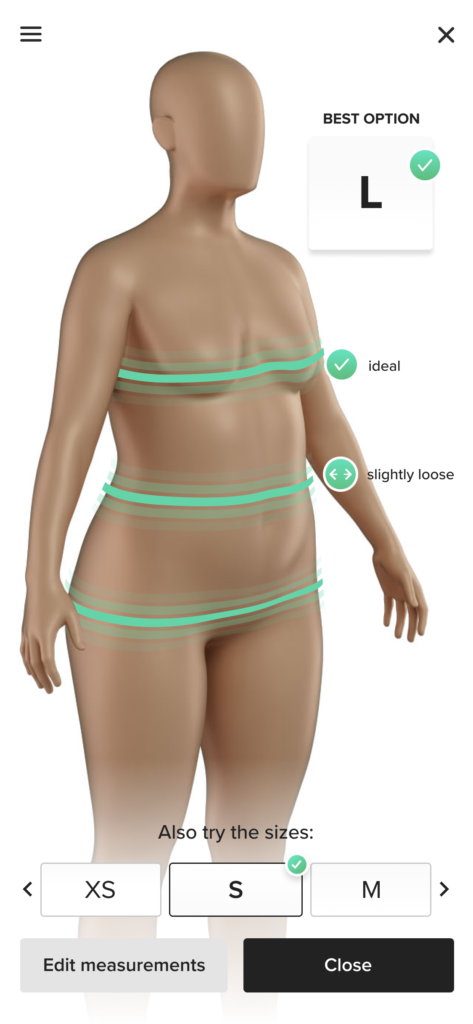Summary:
- The rapid expansion of virtual reality in the fashion industry is paving the way for multiple possibilities once unimaginable;
- Leading fashion brands are embracing virtual fashion, reaping substantial benefits in terms of sales volume and popularity;
- Begin your journey of experimentation and creation in virtual fashion with Audaces360 multi-solution! Sign up now for a free trial!
The fashion industry has been revolutionized by the emergence of virtual reality technology. In recent years, fashion shows have expanded their reach into the virtual world, and virtual reality shopping experiences have skyrocketed in popularity.
Advancements such as AR try-ons, virtual dressing rooms, and virtual shops have played a significant role in this transformation.
Fashion is a sophisticated sector that continuously integrates new technologies, shaping the landscape of retail and design.
If you’re interested in delving deeper into the intersection of virtual reality and fashion and exploring the vast array of possibilities it offers, join us in this article!
Sumário
Happy reading!
What is the influence of virtual reality in fashion manufacturing?

Let’s take it step by step: what does virtual reality really mean?
When we refer to Virtual Reality (VR), we are describing a powerful technology that transports us to a different reality from our own. By wearing VR headsets, we are able to disconnect from the physical world and immerse ourselves elsewhere.
In this alternate reality, everything we see and hear is replaced by computer-generated images and sounds. These digital environments provide a 360-degree perspective, creating an immersive experience where we can interact with our surroundings using our hands, just as we would in real life.
VR enables us to climb mountains, explore the universe, test-drive unreleased car models, visit homes under construction, attend concerts, relax on a Caribbean beach, engage with new machinery, walk alongside famous poets, or even connect with friends on the other side of the world.
In the fashion industry, VR possesses immense transformative potential.
For instance, virtual reality fashion shows can transport users to the runway, allowing them to experience the sensation of walking amidst the models. Additionally, users can enjoy a 360-degree view of each look, observing the designs from every angle.
By incorporating virtual reality into fashion manufacturing, the possibilities are endless, revolutionizing the way we perceive and engage with fashion.
Learn more: Find out how futuristic fashion is revolutionizing the industry with technology
How does virtual reality impact fashion production trends?
The fashion industry is known for its ever-evolving nature, and the technologies it embraces are no exception. Virtual reality has emerged as a prominent force within the fashion world, introducing previously unimaginable experiences and events that transcend physical limitations.
To remain at the forefront, brands, and retailers are swiftly adopting these innovative tools and technologies for digital design, thereby creating unparalleled experiences for their audiences.
Here are some notable applications of virtual reality in the realm of fashion:
Prada Virtual Reality
The Prada Virtual Reality project features a collection of videos that can be found on platforms such as YouTube VR and VEER.
This initiative takes viewers on a virtual tour of some of Prada’s most iconic locations, including the Epicenter stores in Tokyo and the Prada Foundation in Milan and Venice. Users also can explore Prada’s collections and witness the behind-the-scenes setup of their runway presentations.
New York Digital Fashion Week
New York Digital Fashion Week is a two-day fashion event that takes place in the digital space. It offers both tangible and intangible experiences that connect fashion enthusiasts and industry professionals through Virtual Reality.
This event transcends traditional barriers in the fashion world, providing designers from around the globe with the chance to showcase their projects and services to a global audience.
The event features panel discussions, presentations, a curated digital fashion show, and immersive experiences presented by leading digital artists.
Rebecca Minkoff
Rebecca Minkoff is one of the brands at the forefront of innovation and has been actively exploring virtual reality since 2014.
They were among the pioneers in integrating augmented reality into their e-commerce platform, which increased customer engagement and propensity to purchase.
Today, the brand’s team continues to push boundaries by experimenting with alternative designs and patterns through virtual replication of their stores. This allows them to gauge consumer reactions and identify designs that generate greater interest.
Rebecca Minkoff has taken their VR experiments even further by incorporating virtual reality technology into the creation of their products and accessories.
Before finalizing a new bag design in a specific color, the stylist tests it in virtual reality to assess its potential success and ensure it meets their expectations.
Learn more: Explore the fashion metaverse and make your collection stand out
All the benefits of combining fashion and virtual reality in clothing manufacturing

In the realm of fashion retail, leveraging technology intelligently paves the way for success.
Technological innovations have the potential to enhance retailers’ understanding of customers, foster improved interactions, personalize products and shopping experiences, and streamline logistics processes to reduce costs.
Now, let’s delve into concrete examples and to understand why investing in virtual reality is worth considering. There are several reasons, and we have outlined 4 of them below:
Virtual design
Virtual fashion opens exciting opportunities for the world of design.
Numerous fashion brands are now investing in the creation of exclusively virtual collections, as the digital realm offers expanded possibilities for conceptualizing and designing garments that break free from traditional boundaries and limitations.
In this virtual landscape, a single product can be customized in countless ways, with specific details and applications that transcend physical constraints and production difficulties. Moreover, these virtual designs can be realized in almost real-time, further enhancing the creative process.
Learn more: Why augmented reality in fashion is a smart business move?
Virtual sample-making
The advent of virtual fashion design brings forth a new era of experimentation and engagement, empowering buyers and stylists to explore an extensive range of styles and models without the need for physical materials.
This virtual approach also offers a more precise and quantitative evaluation of their work.
By leveraging virtual representations of garment samples, substantial reductions in waste throughout the production process can be achieved.
This includes minimizing the use of materials, such as fabric and thread, as well as reducing the environmental impact associated with shipping and showcasing physical items.
As a result, both the customer and the brand benefit from an improved experience that aligns with sustainable practices.
Learn more: Discover the benefits of digital sewing patterns and how they work
Personalization
Personalization has emerged as one of the prominent trends in the fashion industry, and it shows no signs of fading away quickly.
Today’s consumers are increasingly seeking exclusive and one-of-a-kind products. However, achieving true personalization in the physical world can be challenging, especially for those without prior experience.
Often, the results fall short of expectations, leading to disappointment.
Virtual reality presents a game-changing opportunity to create unique garments and accessories while experimenting and pre-visualizing the realistic outcome.
By utilizing virtual reality technology, customers can actively participate in the design process, ensuring that the final product aligns with their desires. This not only avoids negative customer experiences but also minimizes returns and other practices that are detrimental to the environment.
Learn more: What is digital clothing and how does it impact the fashion industry?
Sustainability
Sustainability remains a significant challenge for the fashion industry, known for being one of the most environmentally impactful sectors.
But virtual reality is poised to change this narrative by offering fashion designers a way to address key ethical concerns. Virtual fashion design significantly reduces waste throughout the clothing production chain.
In traditional fashion production, flawed garment samples often end up discarded. In contrast, virtual reality allows for the elimination of defective designs with a simple press of a button, leaving no physical waste behind and significantly reducing pollution.
Moreover, virtual clothing design and creation save valuable resources, including paper, fabric, time, travel, and carbon emissions associated with shipments. By transitioning to online platforms, fashion brands can cut costs while minimizing their environmental footprint.
Learn more: How to master sustainable creation and production in the eco-fashion era
How can clothing manufacturers make the most of virtual reality?

Clothing manufacturers can harness the power of virtual reality technology in various ways, leveraging its capabilities to create endless possibilities for both them and their customers.
Here are some examples:
“Try before you buy”
We have already discussed the transformative function of size and fit advisors, which enables customers to bypass the frustrations of physical dressing rooms. By utilizing this technology, customers can save time and try on a wide variety of dresses in different colors, patterns, and sizes, for instance.
Size advisor solutions represent a significant breakthrough, especially for those with limited time or discomfort with traditional shopping experiences. It undoubtedly contributes to increased customer satisfaction and facilitates purchasing decisions.

Enhanced purchasing experience
According to a report by Retail Dive, 62% of buyers still value the interaction with products before making a purchase and prefer to shop in physical locations.
However, thanks to virtual reality and augmented reality technologies, buyers can now navigate shopping centers or commercial establishments from the comfort of their homes.
Virtual reality and augmented reality enable customers to have a virtual shopping experience where they can explore stores, view products, and gain a better understanding of what is available.
This technology allows them to have a more targeted approach, knowing in advance what they are looking for and making their in-store visits more purposeful.
Learn more: How can fashion brands boost their business with technology?
Personalized shopping
Augmented reality applications can leverage users’ personal information to recommend objects that align with their preferences and desires. This customer-centric strategy further enhances targeting accuracy, offering numerous advantages as a result.
Moreover, augmented reality provides a quicker way to access desired information. Instead of sifting through extensive lists of specifications on a retailer’s website, users can simply use their camera to scan a specific section of a product and instantly visualize if it matches their needs and desires.
Virtual showrooms and pop-up stores
Innovative brands are embracing virtual showrooms and pop-up shops within the metaverse, offering consumers a unique shopping experience.
Through their devices, customers can log into virtual stores, explore collections, try on garments virtually, and even make purchases.
This approach combines the convenience of online shopping with the sensory experience of physical stores. By immersing themselves in virtual environments, consumers can enjoy the visual and interactive aspects of traditional shopping, all from the comfort of their own homes.
Hybrid fashion events
Hybrid fashion events have emerged as a combination of face-to-face and virtual elements, blending physical and digital experiences. These events feature fashion shows held in physical spaces but are also live-streamed to a virtual audience, ensuring inclusive participation for all.
By embracing this phygital approach, fashion events transcend physical limitations, allowing individuals from anywhere in the world to engage and participate, regardless of their physical presence.
Experience the perfect fusion of fashion and virtual reality with Audaces Fashion Studio

Virtual reality in fashion is now made possible through advanced software solutions. At Audaces, we are dedicated to continuously seeking and providing the best technologies that can meet the needs of the fashion industry, both in the present and the future.
Audaces Fashion Studio
Audaces Fashion Studio is a digital software that offers seamless integration of fashion into the virtual realm. It facilitates visual communication among teams and streamlines the approval process for designs.
With Fashion Studio, you can:
- Create virtual patterns directly on a three-dimensional mannequin, eliminating the need for physical samples;
- Simulate fabric wearability in a virtual and digital environment, allowing for better design decisions;
- Apply colors, prints, and realistic textures, unleashing your imagination;
- Drastically reduce the number of physical samples during the creation stage;
- Achieve clear and efficient communication between stylists and pattern makers;
- Slash costs during the design phase;
- And so much more!
Audaces Fashion Studio offers a wide range of functionalities to enhance your creativity and boost the efficiency of your fashion business. It is the perfect tool for those seeking to invest in a virtual fashion.
To explore all the possibilities that fashion in the metaverse holds (and how Audaces Fashion Studio can assist you in that journey), download our free e-book below:
FAQ
Virtual reality is an immersive experience facilitated by technology, where what we see and hear is replaced by computer-generated images and sounds.
Virtual reality is already making its mark in the commercial strategies of leading fashion brands, and its presence is expected to grow even further in the future.
Virtual reality enables virtual design experimentation, simplifies the sample-making phase, promotes personalization, and contributes to the sustainability of the fashion industry.






